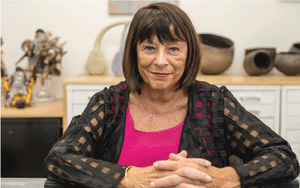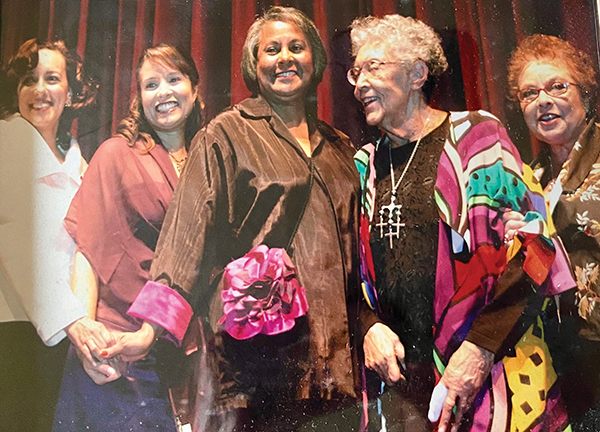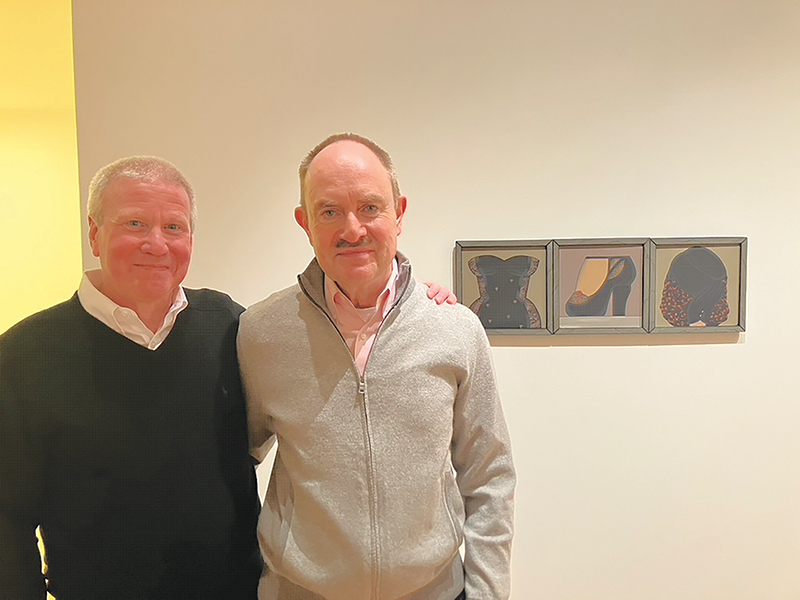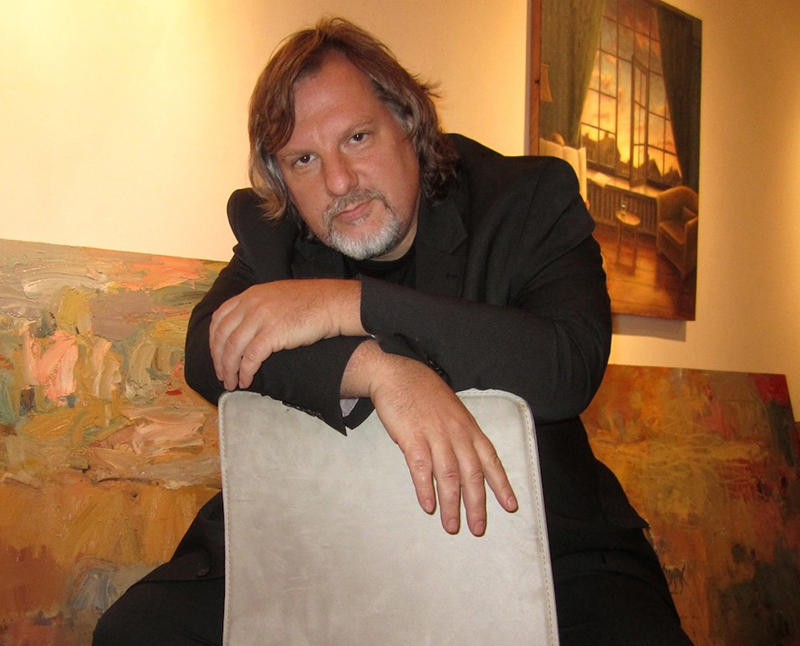Rhona Hoffman: 40 Years of Having Fun


By KEVIN NANCE
Since the mid-1970s, Rhona Hoffman has been a force in the Chicago art world and beyond—a fact enshrined last December by Vanity Fair magazine, which named her one of America’s 14 most important female art dealers.
Known for showing a mix of formal and/or politically engaged work by artists at various points in their careers, Hoffman’s eponymous gallery has established a track record and reputation far larger than its relatively modest digs in the West Loop. If you’re an artist in Chicago, or one from elsewhere looking for a prime showcase in the Midwest, the Rhona Hoffman Gallery is high on your list. And if you’re a collector with an eye for the latest and greatest in contemporary art, you head to 118 N. Peoria Street.
Chicago Gallery News recently caught up with Hoffman—who was working with her staff to prepare the gallery’s booth design for this fall’s EXPO CHICAGO—for an interview in her light-and-art-filled office. Here’s an edited transcript of our chat.
CGN: Has your work as an art dealer been affected at all by you being a woman?
RH: No, although with the exception perhaps of a Marian Goodman or a Barbara Gladstone or maybe a few others, generally the superpowers in the art world are men, both in America and Europe.
You’re talking about people like Larry Gagosian?
Gagosian, yes. But Hauser & Wirth are even bigger. David Zwirner. They are eclipsing a number of bigger, male-owned galleries. The men tend to go for the big paintings, the big prices. But there are still very powerful women dealers all over the world. Paula Cooper is still there. Marianne Boesky’s becoming a big deal. In Europe, there’s Monika Sprüth. In São Paulo, there’s Luisa Strina. In fact, there are more women who are dealers than there are men who are dealers. But the price points are generally lower. I hate broad generalizations, but in great measure, women dealers tend to show art that sells for considerably less than the men. And what’s happening now—which is really horrifying—is that certain big galleries are waiting for the depth of the artist to be developed. As a less-monied gallery develops the artist—has shows, takes them to art fairs, takes care of them, brings them to the world, makes them popular—along comes Mr. Big Fish and says, “Come with me, little girl or little boy. I can make you even more popular.” It’s always been the case, but it’s happening more now.
Have you been on the receiving end of that?
Not yet. (Thinks about it.) Yes, I have, actually.
You had an artist who was poached?
I wouldn’t say poached. The Pace Gallery took on Robert Ryman, and I never really had another show since then. They seemed to be able to control that. And David Zwirner now represents Fred Sandback. I have an excellent relationship with the estate, so they’re not going to completely take it away from me. But I have less control over it than Zwirner does.
In the case of Ryman, that was someone you had invested in, so to speak.
Yes, yes. We’d been showing him since the late ’70s.
This did not make you happy?
Well, why would I like being run over? (Laughs.) I’m not a masochist.
Getting back to the topic of women in your history as a gallerist: The Young Hoffman Gallery, which you started with Donald Young in the mid-’70s, was one of the first to show a lot of women artists, including Cindy Sherman, Barbara Kruger, Jenny Holzer, etc. Was there, and is there now, a preference on your part to show women artists?
If so, it’s not conscious. We always picked work that we thought was challenging and interesting. I have to amuse myself, you know. I’m not here just to make other people happy. I have to take care of my ego as well. I have to come to work and feel good, and I like to back a good horse. You know, back in the late ’70s and early ’80s, the people doing the most exciting things were women. I’m a very political, socio-political animal, and I care about the world. The gallery is still split between artists who do formal work and people who are actively engaged in societal concerns. And the women were political. Barbara Kruger was political, for sure. Cindy Sherman, not so much. But they were doing interesting things. And then in the early ’90s, along came the African-American artists, who were doing work that intrigued me. I think it’s like no one having heard of [Jorge Luis] Borges or [Gabriel Garcia] Márquez. They just seemed to break upon the scene here, but they’d already had huge careers in South America. The same thing happens in the visual arts. You start seeing work that’s interesting to you, for a variety of reasons—including, always, the formal aspects. And that’s where you want the dialogue to be.
But it wasn’t that you were making a special point of recruiting women artists, or African-American artists, for the sake of addressing some imbalance.
Not at all.
And that’s still true?
Absolutely. In terms of African-American artists, we started Mickalene Thomas’s career. Now we have Deana Lawson, who has a show opening at the Art Institute on Sept. 5. We have Derrick Adams. Of the new artists we have taken on in the last couple of years, one is an African-American artist, Nathaniel Mary Quinn, who actually was raised in the Robert Taylor Homes in Chicago. You never heard of him. But you will.
He sounds like a good story.
Yes. He grew up poor. When he was 14 or 15, his mom died. Her name was Mary Quinn, so he took her first name as his middle name. He was very fortunate in that he had two teachers who took him under their wing and pushed him along at school, got him scholarships, things like that. He made it. Very smart, very verbal.

To what extent would you say your choices as a gallerist reflect your personal taste in art?
One hundred percent.
You wouldn’t take on an artist whose work you personally didn’t care for but thought might sell?
Never.
How would you describe the niche you’ve carved out as a dealer?
Well, we’re a Midwest gallery. We largely sell in the greater Midwest, except for art fairs, where the world comes and you sell to anybody from anyplace. I don’t have a show of a New York artist and immediately sell it back to New York art collectors. Nathaniel’s show, for example, comes fresh from the studio, we open it without anything sold—although there are people in New York dying to buy some of the pieces—and Chicago goes first, and the Midwest. Then the rest of the world can go. That gives me an edge. I give the artist a bigger exposure than if he or she had shows only in New York.
It seems like you used to do a lot of art fairs; now, not so much.
I’ve cut back, yes. Now I’m just doing three, the Art Dealers Association show in New York, Art Basel Miami and EXPO CHICAGO. We went to Hong Kong for three years, we’ve done other fairs. But they’re very costly. And a lot of the work I sell at an art fair, I could sell anyplace. And you know, I don’t have a Picasso to pull out of the back room to cover the cost of a fair.
How have the fairs changed the way you do business?
What the fairs did was change the composition of your clientele. Now the collectors go to all the fairs and they know all the dealers. So they’re not going to come to you as a dealer and say, “Oh, I want to buy a this or a that, could you get me one?” They’re just going to go to a fair and buy one from whoever’s selling it. So everyone has the same clients now, mostly. Everyone can buy from everybody now.
And that’s less satisfactory to you than the old way?
Yeah, because there’s less conversation. [Chicago collectors] Jack and Sandy Guthman and I were together a while back, and we were reminiscing about what Saturdays used to be like in the good old days, the ’80s and ’90s. On Saturdays, collectors would come and sit around my office and we’d talk about art. Now everyone’s too busy. And the other thing that really is the bane of my existence is that everybody—well, not everybody, but so many people have art advisors. Of course, there are some really good ones. But you don’t have to go to school to hang out your shingle as an art advisor. Your information, your history, your ability to discern art is unknown. And they take people around and say, “Look at this, this is interesting.” I understand it to some degree, because people are busy, they’re working too hard. So you have someone now who makes money from you when you buy something through them, plus sometimes they get a stipend from the gallery. It’s interesting.
People say the art world runs on reputation, and that goes for both artists and dealers.
That’s a stupid generalization. The art world runs on a lot of stuff.
But you do have a reputation.
I know, I’m reading about it now. (Laughs.) I’m well-known for doing just what I said. And I’m known for doing it as long as I’ve done it. Starting in ’76, that’s a long way from there to here.
I wonder where that places you on the list of longest-serving gallerists in Chicago? Near the top, I’m thinking.
Well, there’s the Richard Gray Gallery. They were there since before me. Stanley Johnson. (Thinks.) Hmm. Wow. That makes me maybe the oldest living dealer really active in Chicago.
There’s Ann Nathan—
Oh, Ann, of course. She’s been around longer than I have. Maybe Carl Hammer?
Well, what I’m getting around to, a little fearfully, is the fact that you’re at a point in your career when many people are considering retirement. Do you have thoughts along those lines?
I don’t know. I just signed a new lease, but only for three years. I’ll think about it then. (Smiles.) The thing is, my job comes along with a really nice life. Not necessarily a lot of money, but a really nice life. I do for a living what I would do in my spare time. I have interesting conversations in this job. I don’t have to be the best friend of every collector who buys things from me, but I’m connected to a world that I’m really interested in, which is theoretical and intellectual. And we drink a lot and have a lot of fun. (Laughs.) So what am I going to do, stay home?
Kevin Nance is a Chicago-based freelance writer and photographer Twitter @KevinNance1






